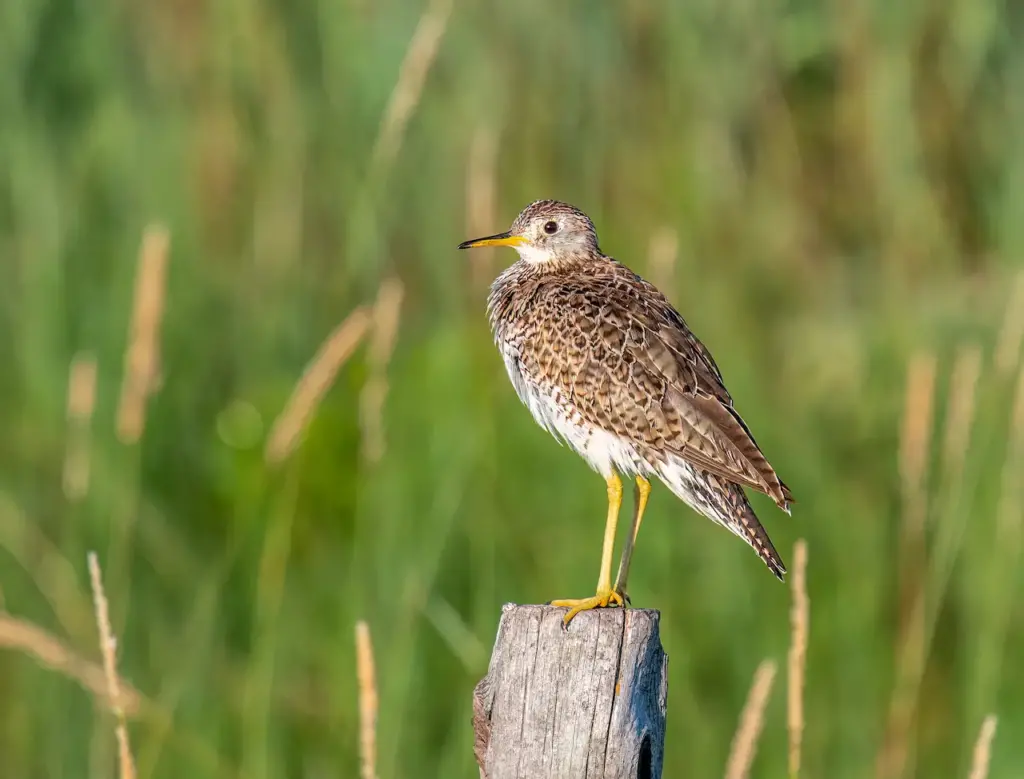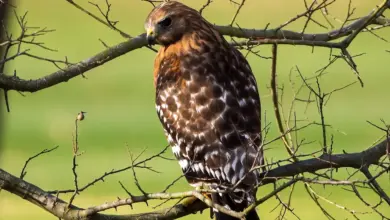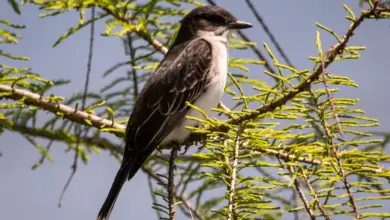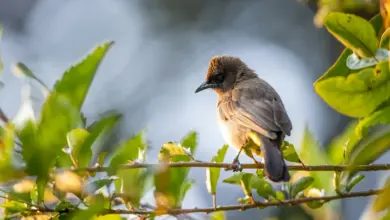The Upland Sandpiper, Bartramia longicauda, is a large shorebird, closely related to the curlews (Thomas, 2004). Older names are the Upland Plover and Bartram’s Sandpiper. It is the only member of the genus Bartramia.
The adult is 28-32 cm long with a 50-55 cm wingspan. It has long yellow legs and a long neck and tail. The head and neck are light with brown streaks. The back and upper wings are a darker mottled brown and the belly is white.

The breeding habitat is open grasslands and fields across central North America and Alaska. Upland Sandpipers can sometimes be found in small loose nesting colonies. The breeding season is from early to late summer; nests are located on the ground in dense grass. The female lays 4 eggs; both parents look after the young and may perform distraction displays to lure predators away from the nest or young birds.
The Upland Sandpiper is a long-distance migrant and winters in South America. It is a very rare vagrant to Europe, notably the Isles of Scilly, where it can be extremely tame, with at least one bird taking worms from a birder’s mouth.
These birds forage in fields, picking up food by sight. They mainly eat insects and some vegetation. They are frequently sighted on fence posts or even telephone poles.
Upland Sandpipers can be identified by their very distinctive call which sounds like a series of descending whistles.
The numbers of these birds increased as forests were cleared in the early 19th century, but declined sharply in the late 1800s due to hunting. They are now fairly common in midwestern North America but populations are scattered in the east.

The genus name and the old common name Bartram’s Sandpiper commemorate the American naturalist William Bartram. The name “Bartram’s Sandpiper” was made popular by Alexander Wilson, who was taught ornithology and natural history illustration by Bartram.
Copyright: Wikipedia. This article is licensed under the GNU Free Documentation License. It uses material from Wikipedia.org … Additional information and photos added by Avianweb.
Please Note: The articles or images on this page are the sole property of the authors or photographers. Please contact them directly concerning any copyright or licensing questions. Thank you.




